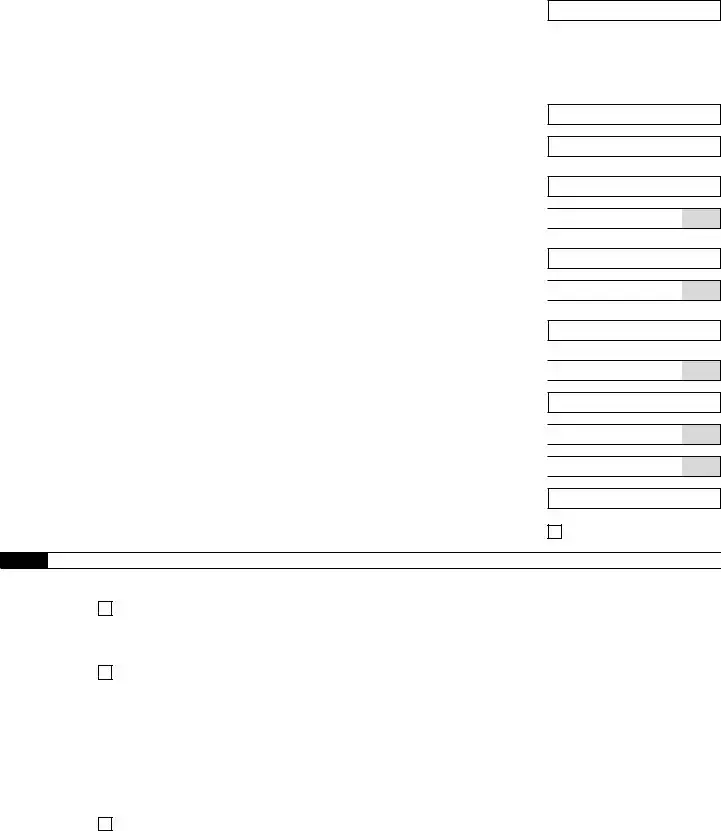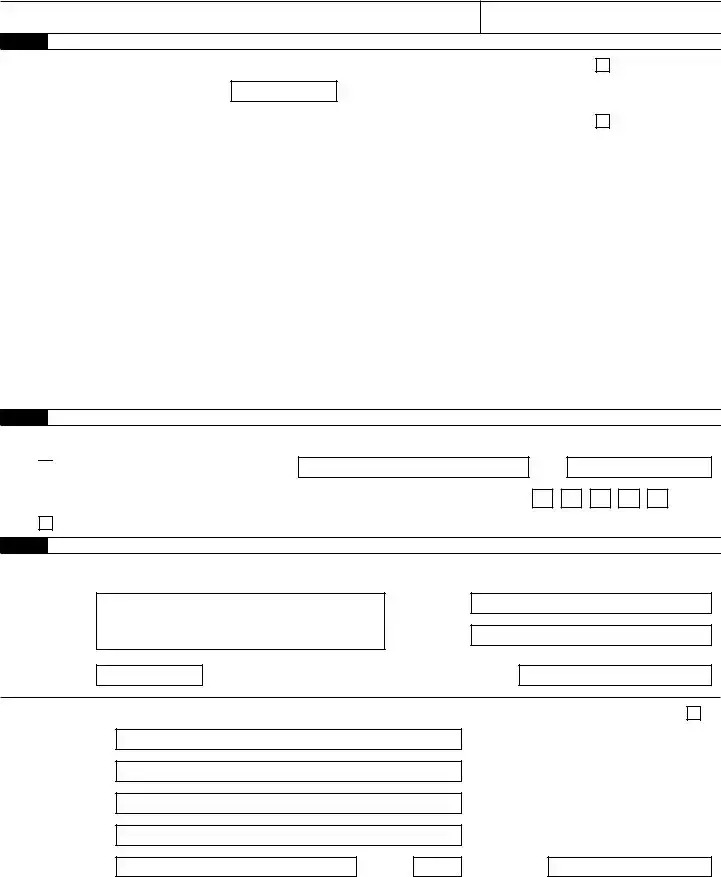Form 941 for 2023: |
Employer’s QUARTERLY Federal Tax Return |
950122 |
|
|
(Rev. March 2023) |
Department of the Treasury — Internal Revenue Service |
OMB No. 1545-0029 |
Employer identification number (EIN) |
|
|
|
— |
|
|
|
|
|
|
|
|
|
|
|
|
|
|
|
|
|
|
|
|
|
|
|
|
|
|
|
|
|
|
|
|
|
|
|
|
|
|
|
|
|
|
|
|
|
|
|
|
|
|
|
|
|
|
|
|
|
|
|
|
|
|
|
|
|
|
|
|
|
|
|
|
Name (not your trade name) |
|
|
|
|
|
|
|
|
|
|
|
|
|
|
|
|
|
|
|
|
|
|
|
|
|
|
|
|
|
|
|
|
|
|
|
|
|
|
|
|
|
|
|
|
|
|
|
|
|
|
|
|
|
|
|
|
|
|
|
Trade name (if any) |
|
|
|
|
|
|
|
|
|
|
|
|
|
|
|
|
|
|
Address |
|
|
|
|
|
|
|
|
|
|
|
|
|
|
|
|
|
|
|
|
|
|
|
|
|
|
|
|
|
|
|
|
|
|
|
|
|
|
|
|
|
|
|
|
|
|
|
|
|
|
|
|
|
|
|
Number |
Street |
|
|
|
|
|
Suite or room number |
|
|
|
|
|
|
|
|
|
|
|
|
|
|
|
|
|
|
City |
|
|
|
|
State |
|
|
ZIP code |
|
|
|
|
|
|
|
|
|
|
|
|
|
|
Foreign country name |
|
|
Foreign province/county |
|
|
Foreign postal code |
Report for this Quarter of 2023
(Check one.)
1: January, February, March
2: April, May, June
3: July, August, September
4: October, November, December
Go to www.irs.gov/Form941 for instructions and the latest information.
Read the separate instructions before you complete Form 941. Type or print within the boxes.
Part 1: Answer these questions for this quarter.
1 |
Number of employees who received wages, tips, or other compensation for the pay period |
|
including: Mar. 12 (Quarter 1), June 12 (Quarter 2), Sept. 12 (Quarter 3), or Dec. 12 (Quarter 4) 1 |
|
|
|
|
|
|
|
|
|
2 |
Wages, tips, and other compensation |
. |
2 |
3 |
Federal income tax withheld from wages, tips, and other compensation |
. |
3 |
4 |
If no wages, tips, and other compensation are subject to social security or Medicare tax |
|
|
|
Column 1 |
|
Column 2. |
|
5a |
Taxable social security wages* . . |
. |
× 0.124 = |
|
|
|
|
|
|
|
. |
|
5a |
(i) |
Qualified sick leave wages* . |
. |
× 0.062 = |
|
|
|
|
|
|
|
|
. |
|
5a |
(ii) |
Qualified family leave wages* . |
. |
× 0.062 = |
|
|
|
|
|
|
|
. |
|
5b |
Taxable social security tips . . . |
. |
× 0.124 = |
|
|
|
|
|
|
|
. |
|
5c |
Taxable Medicare wages & tips. . |
. |
× 0.029 = |
|
|
5d |
Taxable wages & tips subject to |
|
|
|
|
|
. |
× 0.009 = |
|
. |
|
|
Additional Medicare Tax withholding |
|
|
5e |
Total social security and Medicare taxes. Add Column 2 from lines 5a, 5a(i), 5a(ii), 5b, 5c, and 5d |
|
5e |
5f |
Section 3121(q) Notice and Demand—Tax due on unreported tips (see instructions) . |
. |
5f |
6 |
Total taxes before adjustments. Add lines 3, 5e, and 5f |
. |
6 |
7 |
Current quarter’s adjustment for fractions of cents |
. |
7 |
8 |
Current quarter’s adjustment for sick pay |
. |
8 |
9 |
Current quarter’s adjustments for tips and group-term life insurance |
. |
9 |
10 |
Total taxes after adjustments. Combine lines 6 through 9 |
. |
10 |
11a |
Qualified small business payroll tax credit for increasing research activities. Attach Form 8974 |
11a |
11b |
Nonrefundable portion of credit for qualified sick and family leave wages for leave taken |
|
|
before April 1, 2021 |
. . . . . . . . . . . . . . . . . . . . . . |
. |
11b |
.
.

 Check and go to line 6.
Check and go to line 6.
*Include taxable qualified sick and family leave wages paid in this quarter of 2023 for leave taken after March 31, 2021, and before October 1, 2021, on line 5a. Use lines 5a(i) and 5a(ii) only for taxable qualified sick and family leave wages paid in this quarter of 2023 for leave taken after March 31, 2020, and before April 1, 2021.
.
.
.
.
.
.
.
.
.
11c Reserved for future use . . . . . . . . . . . . . . . . . . . . . . 11c 
You MUST complete all three pages of Form 941 and SIGN it.
For Privacy Act and Paperwork Reduction Act Notice, see the back of the Payment Voucher. |
Cat. No. 17001Z |
Form 941 (Rev. 3-2023) |
951222
Name (not your trade name) |
Employer identification number (EIN) |
|
|
– |
Part 1: |
Answer these questions for this quarter. (continued) |
|
11d Nonrefundable portion of credit for qualified sick and family leave wages for leave taken after March 31, 2021, and before October 1, 2021 . . . . . . . . . . . . . 11d
|
|
|
|
|
11e |
Reserved for future use |
. . . . . . . . . 11e |
. |
11f |
Reserved for future use |
|
|
|
|
|
|
11g |
Total nonrefundable credits. Add lines 11a, 11b, and 11d |
11g |
12 |
Total taxes after adjustments and nonrefundable credits. Subtract line 11g from line 10 . |
12 |
13a |
Total deposits for this quarter, including overpayment applied from a prior quarter and |
|
|
overpayments applied from Form 941-X, 941-X (PR), 944-X, or 944-X (SP) filed in the current quarter |
13a |
13b |
Reserved for future use |
13b |
.
 .
.
13c Refundable portion of credit for qualified sick and family leave wages for leave taken |
|
before April 1, 2021 |
13c |
13d Reserved for future use |
13d |
.
 .
.
13e Refundable portion of credit for qualified sick and family leave wages for leave taken after March 31, 2021, and before October 1, 2021 . . . . . . . . . . . . . . 13e
13f |
Reserved for future use |
13f |
13g |
Total deposits and refundable credits. Add lines 13a, 13c, and 13e |
13g |
13h |
Reserved for future use |
13h |
13i |
Reserved for future use |
13i |
14Balance due. If line 12 is more than line 13g, enter the difference and see instructions . . . 14
|
|
|
|
15 |
Overpayment. If line 13g is more than line 12, enter the difference |
. |
Check one: |
 .
.
.
 .
.
 .
.
.
Apply to next return. |
|
Send a refund. |
Part 2: Tell us about your deposit schedule and tax liability for this quarter.
If you’re unsure about whether you’re a monthly schedule depositor or a semiweekly schedule depositor, see section 11 of Pub. 15.
Line 12 on this return is less than $2,500 or line 12 on the return for the prior quarter was less than $2,500, and you didn’t incur a $100,000 next-day deposit obligation during the current quarter. If line 12 for the prior quarter was less than $2,500 but line 12 on this return is $100,000 or more, you must provide a record of your federal tax liability. If you’re a monthly schedule depositor, complete the deposit schedule below; if you’re a semiweekly schedule depositor, attach Schedule B (Form 941). Go to Part 3.
You were a monthly schedule depositor for the entire quarter. Enter your tax liability for each month and total
liability for the quarter, then go to Part 3.
|
|
|
Tax liability: Month 1 |
. |
|
|
|
|
Month 2 |
. |
|
|
|
|
Month 3 |
. |
|
|
|
|
Total liability for quarter |
. |
Total must equal line 12. |
You were a semiweekly schedule depositor for any part of this quarter. Complete Schedule B (Form 941),
Report of Tax Liability for Semiweekly Schedule Depositors, and attach it to Form 941. Go to Part 3.
You MUST complete all three pages of Form 941 and SIGN it.
Page 2 |
Form 941 (Rev. 3-2023) |
Name (not your trade name)
Employer identification number (EIN)
–
Part 3: Tell us about your business. If a question does NOT apply to your business, leave it blank.
17 If your business has closed or you stopped paying wages . . . . . . . . . . . . . . .
enter the final date you paid wages
; also attach a statement to your return. See instructions.
18 If you’re a seasonal employer and you don’t have to file a return for every quarter of the year . . .
19Qualified health plan expenses allocable to qualified sick leave wages for leave taken before April 1, 2021
20Qualified health plan expenses allocable to qualified family leave wages for leave taken before April 1, 2021
21 |
Reserved for future use |
22 |
Reserved for future use |
23Qualified sick leave wages for leave taken after March 31, 2021, and before October 1, 2021
24Qualified health plan expenses allocable to qualified sick leave wages reported on line 23
25Amounts under certain collectively bargained agreements allocable to qualified sick
leave wages reported on line 23 . . . . . . . . . . . . . . . . . . .
26Qualified family leave wages for leave taken after March 31, 2021, and before October 1, 2021
27Qualified health plan expenses allocable to qualified family leave wages reported on line 26
28Amounts under certain collectively bargained agreements allocable to qualified family leave wages reported on line 26 . . . . . . . . . . . . . . . . . . .
|
|
19 |
. |
|
|
20 |
. |
|
|
21 |
. |
|
|
22 |
. |
|
|
23 |
. |
|
|
24 |
. |
|
|
25 |
. |
|
|
26 |
. |
|
|
27 |
. |
|
|
28 |
. |
Part 4: May we speak with your third-party designee?
Do you want to allow an employee, a paid tax preparer, or another person to discuss this return with the IRS? See the instructions
for details.

 Yes. Designee’s name and phone number
Yes. Designee’s name and phone number
Select a 5-digit personal identification number (PIN) to use when talking to the IRS.
No.
Part 5: Sign here. You MUST complete all three pages of Form 941 and SIGN it.
Under penalties of perjury, I declare that I have examined this return, including accompanying schedules and statements, and to the best of my knowledge and belief, it is true, correct, and complete. Declaration of preparer (other than taxpayer) is based on all information of which preparer has any knowledge.
Print your name here
Print your title here
Best daytime phone
Paid Preparer Use Only
Preparer’s name
Preparer’s signature
Firm’s name (or yours if self-employed)
Address
City
Check if you’re self-employed . . .
ZIP code
Page 3 |
Form 941 (Rev. 3-2023) |
951020
This page intentionally left blank
Form 941-V, Payment Voucher
Purpose of Form
Complete Form 941-V if you’re making a payment with Form 941. We will use the completed voucher to credit your payment more promptly and accurately, and to improve our service to you.
Making Payments With Form 941
To avoid a penalty, make your payment with Form 941 only if:
•Your total taxes after adjustments and nonrefundable credits (Form 941, line 12) for either the current quarter or the preceding quarter are less than $2,500, you didn’t incur a $100,000 next-day deposit obligation during the current quarter, and you’re paying in full with a timely filed return; or
•You’re a monthly schedule depositor making a payment in accordance with the Accuracy of Deposits Rule. See section 11 of Pub. 15 for details. In this case, the amount of your payment may be $2,500 or more.
Otherwise, you must make deposits by electronic funds transfer. See section 11 of Pub. 15 for deposit instructions. Don’t use Form 941-V to make federal tax deposits.
▲! Use Form 941-V when making any payment with Form 941. However, if you pay an amount with
CAUTION Form 941 that should’ve been deposited, you may be subject to a penalty. See Deposit Penalties in section 11 of Pub. 15.
Specific Instructions
Box 1—Employer identification number (EIN). If you don’t have an EIN, you may apply for one online by visiting the IRS website at www.irs.gov/EIN. You may also apply for an EIN by faxing or mailing Form SS-4 to the IRS. If you haven’t received your EIN by the due date of Form 941, write “Applied For” and the date you applied in this entry space.
Box 2—Amount paid. Enter the amount paid with Form 941.
Box 3—Tax period. Darken the circle identifying the quarter for which the payment is made. Darken only one circle.
Box 4—Name and address. Enter your name and address as shown on Form 941.
•Enclose your check or money order made payable to “United States Treasury.” Be sure to enter your
EIN, “Form 941,” and the tax period (“1st Quarter 2023,” “2nd Quarter 2023,” “3rd Quarter 2023,” or “4th Quarter 2023”) on your check or money order. Don’t send cash.
Don’t staple Form 941-V or your payment to Form 941 (or to each other).
•Detach Form 941-V and send it with your payment
and Form 941 to the address in the Instructions for Form 941.
Note: You must also complete the entity information above Part 1 on Form 941.
Detach Here and Mail With Your Payment and Form 941.
Form |
941-V |
|
|
|
|
Payment Voucher |
|
OMB No. 1545-0029 |
|
|
|
|
|
|
|
|
|
|
|
|
|
|
|
Department of the Treasury |
|
|
Don’t staple this voucher or your payment to Form 941. |
|
2023 |
|
Internal Revenue Service |
|
|
|
|
1 Enter your employer identification |
|
2 |
|
Dollars |
|
|
Cents |
|
|
number (EIN). |
|
|
Enter the amount of your payment. |
|
|
|
|
|
|
|
|
|
|
|
|
|
|
|
|
– |
|
|
Make your check or money order payable to “United States Treasury.” |
|
|
|
3 |
Tax Period |
|
4 Enter your business name (individual name if sole proprietor). |
|
|
|
|
|
|
|
|
|
|
|
|
|
|
|
1st |
|
3rd |
|
|
|
|
|
|
|
|
|
|
|
|
|
|
|
|
|
Quarter |
|
Quarter |
|
Enter your address. |
|
|
|
|
|
|
|
|
|
|
|
2nd |
|
4th |
|
|
|
|
|
|
Enter your city, state, and ZIP code; or your city, foreign country name, foreign province/county, and foreign postal code. |
|
|
Quarter |
|
Quarter |
|
|
|
|
|
|
|
|
|
|
|
|
|
|
|
|
|
|
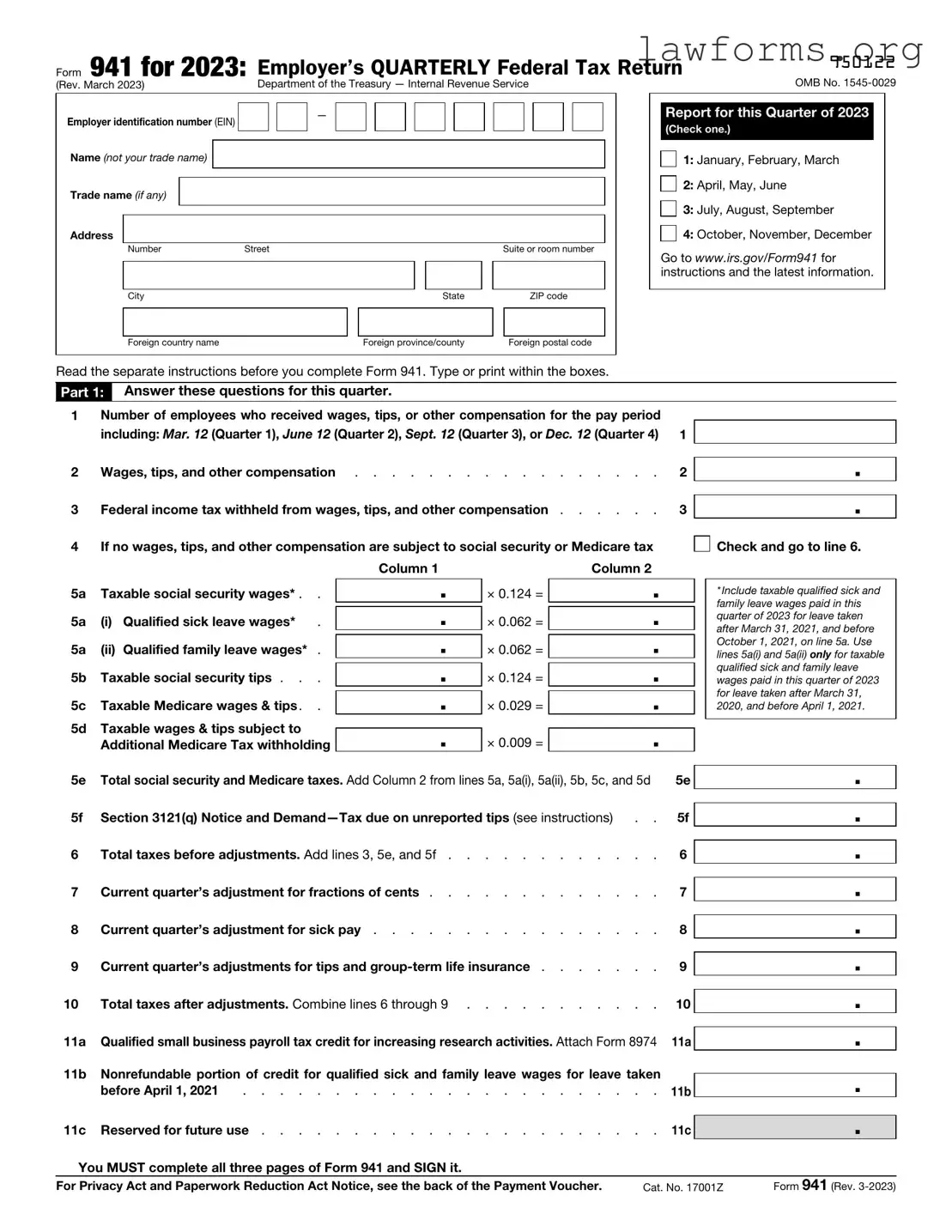
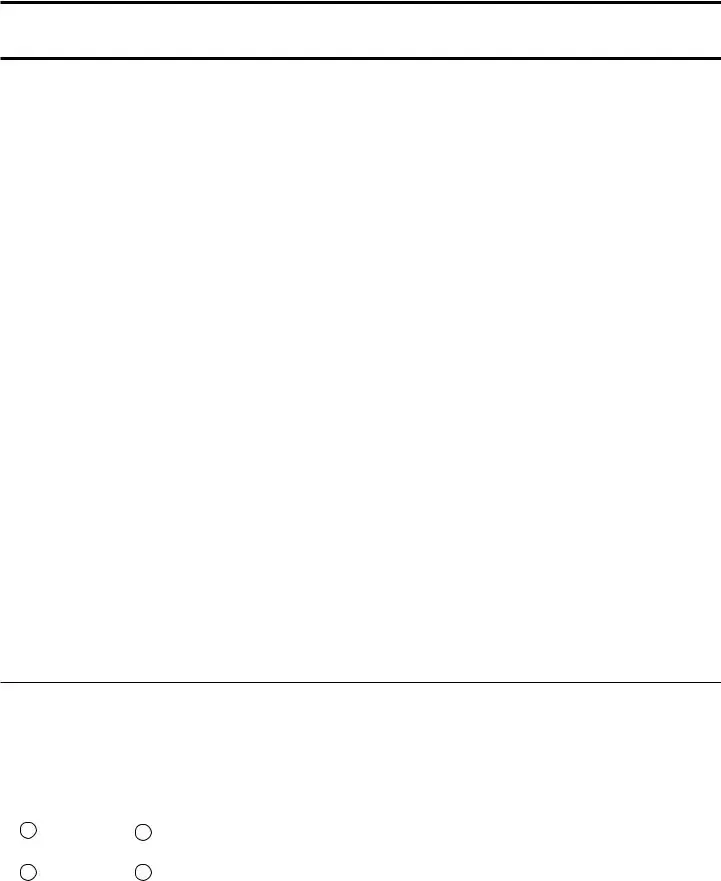

 Check and go to line 6.
Check and go to line 6.
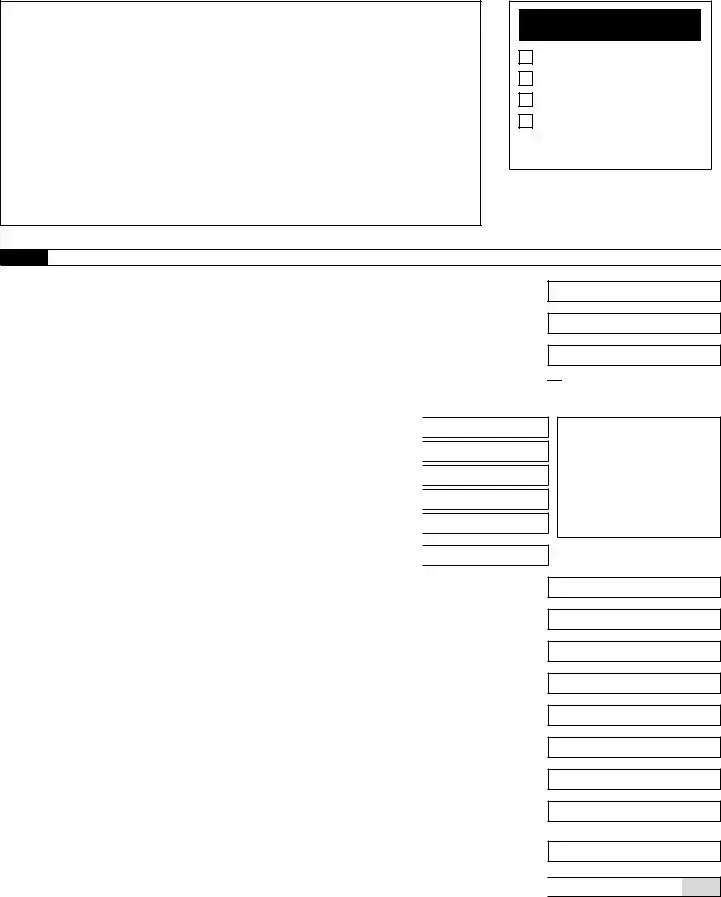
 .
. .
. .
. .
. .
.

 Yes. Designee’s name and phone number
Yes. Designee’s name and phone number